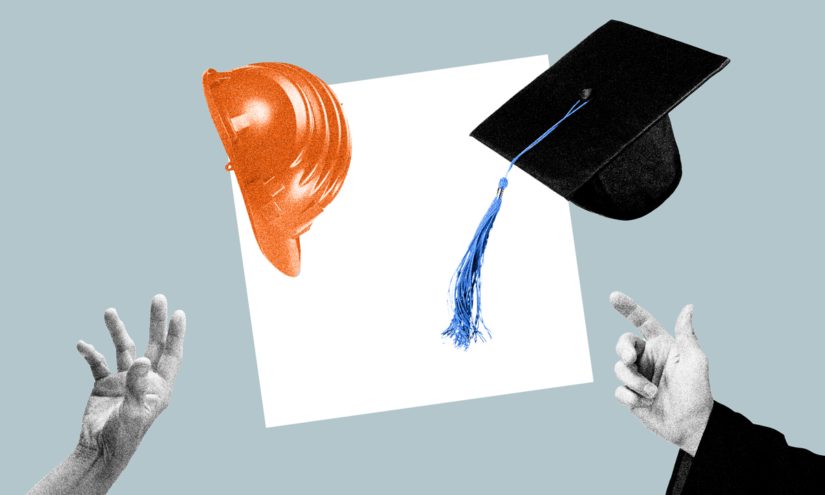During this summer, a team of students from MIT embarked on a journey to the sou …
New England High Schools Under Study to Determine Student Success Strategies
Carlos Changemaker

A recent study conducted by researchers from the Center on Reinventing Public Education at Arizona State University and Columbia University’s Center for Public Research and Leadership examined the post-pandemic strategies of six high schools in New England. The study identified two key themes: moving away from the “college for all” approach and grappling with whether to maintain the leniency provided during the COVID-era. These six schools, with high numbers of students of color and those from low-income backgrounds, aimed to offer multiple pathways to postsecondary success beyond college while maintaining academic rigor and expectations. This shift in mindset and purpose marks a departure from traditional understandings of schooling. The study, titled “A ‘Good Life’ for Every Student,” highlights the schools’ efforts to redefine success and reimagine their role.
Chelsea Waite, a senior researcher at the Center on Reinventing Public Education, explained that high schools were taking on more responsibility for long-term student success. The researchers conducted 266 interviews with various stakeholders, including students, graduates, parents, teachers, and school administrators, between April 2022 and November 2023. These interviews involved four traditional public schools and two charter schools located in Massachusetts and Rhode Island. The schools included alternative programs for overage and undercredited students, pregnant or parenting students, and students with chronic absenteeism. While some students desired a college education, others sought immediate workforce entry. Financial security was deemed important for a “happy life,” but it was not the sole determinant of success.
Instead of solely focusing on graduation and college enrollment, the six schools aimed to identify students’ aspirations and individualized plans for adulthood. Their goal was to set students on the path to a fulfilling life. However, there was no full consensus on what constitutes a “good plan.” Therefore, the schools prioritized providing students with a well-defined plan for their future. The researchers asked these schools to share their understanding of success, their strategies for achieving it, and the obstacles they encountered. They noted several challenges, including concerns that increased flexibility could compromise academic rigor, the need to close opportunity gaps, and an overreliance on traditional data for tracking success.
The study also observed various innovative practices implemented by the schools to engage and support students academically:
- Shifting towards interdisciplinary units and coursework that spans multiple subjects, allowing students to explore different areas of interest.
- Increasing access to Advanced Placement (AP) and “Early College Experience” courses in partnership with local colleges and universities.
- Adopting “grading for equity” practices that assess students’ knowledge instead of their behavior.
- Encouraging student-driven learning and providing opportunities for personalized learning experiences.
- Offering individualized mentoring and counseling, such as assigning each student a primary person for regular check-ins.
- Implementing alternative approaches to discipline, such as restorative circles that aim to repair relationships and find mutually agreeable solutions after conflicts.
According to Waite, the study aimed to illustrate the collaborative efforts necessary to support high schools in setting students up for a self-determined future. The researchers acknowledged the limitations of the study, which focused on only six schools in a specific region. However, they believe that the themes and challenges identified are relevant to different types of high schools across the country.
The researchers noted that the COVID-19 pandemic provided an opportunity to study high school reform. Educators and administrators reflected on how to provide flexibility and support while maintaining academic rigor and high expectations. The pandemic highlighted the need to create a supportive environment for students experiencing disruption and trauma. However, the schools are now questioning their next steps as they consider moving away from the “college for all” mindset. Factors such as financial stress, burnout, high-stakes testing, and the increasing number of jobs that don’t require a college degree are influencing students’ perspectives on pursuing higher education. The schools aim to ensure that college access is not limited to a privileged few and to communicate the availability of diverse career options.
The researchers emphasized that high schools cannot address all the challenges alone and emphasized the importance of partnerships between high schools, higher education institutions, and local employers. While the study focused on a specific set of schools, it highlights widespread and relevant issues faced by high schools across the country.


